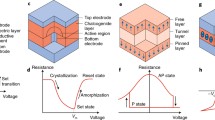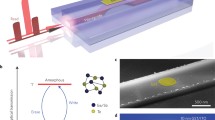Abstract
Quantum computing has the features of parallel and fast processing capability that makes it unique from other conventional computing systems. It has various peculiar properties, like entanglement, that can be leveraged as a resource to build technology. It is a nanotechnology-based qubit programming where different types of electromagnetic interactions are performed for basic operations as qubits and process information as single photons by recreating the quantum state. Quantum computers are more powerful than classical Turing machines because of their coherent superposition of states. Quantum memories would make massive photonic quantum computing systems possible by allowing coherent manipulation, buffering, and retiming of photonic signals. Though traditional PROM (Programmable Read Only Memory) is a slower memory, quantum computing enables the creation of new types of computers capable of operating with qubits as input states, increasing storage capacity. In this paper, a Quantum-based PROM architecture is proposed using algorithms of quantum-based basic operations.
Access this chapter
Tax calculation will be finalised at checkout
Purchases are for personal use only
Similar content being viewed by others
References
Mohammadi, M., Eshghi, M.: Behavioral description of quantum V and V+ gates to design quantum logic circuits. In: 5th International Multi-Conference on Systems, Signals and Devices, pp. 1–5. IEEE (2008)
National Academies of Sciences, Engineering, and Medicine. Quantum computing: progress and prospects. National Academies Press (2019)
Saffman, M.: Quantum computing with atomic qubits and Rydberg interactions: progress and challenges. J. Phys. B: At. Mol. Opt. Phys. 49(20), 202001 (2016)
Van Meter, R., Horsman, D.: A blueprint for building a quantum computer. Commun. ACM 56(10), 84–93 (2013)
Ramezani, S.B., Sommers, A., Manchukonda, H.K., Rahimi, S., Amirlatifi, A.: Machine learning algorithms in quantum computing: A survey. In: 2020 International Joint Conference on Neural Networks (IJCNN), pp. 1–8. IEEE (2020)
Hempel, C., et al.: Quantum chemistry calculations on a trapped-ion quantum simulator. Phys. Rev. X 8, 031022 (2018)
Ors, R., Mugel, S., Lizaso, E.: Quantum computing for finance: overview and prospects. Rev. Phys. 4, 100028 (2019)
Ciliberto, C., et al.: Quantum machine learning: a classical perspective. Proc. R. Soc. A: Math. Phys. Eng. Sci. 474(2209), 20170551 (2018)
Dunjko, V., Briegel, H.J.: Machine learning & artificial intelligence in the quantum domain: a review of recent progress. Rep. Prog. Phys. 81(7), 074001 (2018)
Gambetta, J.M., Chow, J.M., Steffen, M.: Building logical qubits in a superconducting quantum computing system. npj Quant. Inf. 3(1), 1–7 (2017)
Wright, K., et al.: Benchmarking an 11-qubit quantum computer. Nat. Commun. 10(1), 1–6 (2019)
Barenco, A., et al.: Elementary gates for quantum computation. Phys. Rev. A 52(5), 3457 (1995)
Kaye, P., Laflamme, R., Mosca, M.: An Introduction to Quantum Computing. Oxford University Press (2006). Jan 2007eBook-LinG, ISBN 0-19-857000-7
Gibney, E.: Hello quantum world! Google publishes landmark quantum supremacy claim. Nature 574(7779), 461–463 (2019)
Hey, T.: Quantum computing: an introduction. Comput. Control Eng. J. 10(3), 105–112 (1999)
Aspuru-Guzik, A., Dutoi, A.D., Love, P.J., Head-Gordon, M.: Simulated quantum computation of molecular energies. Science 309(5741), 1704–1707 (2005)
Travaglione, B.C., Nielsen, M.A., Wiseman, H.M., Ambainis, A.: ROM-based computation: quantum versus classical. ar**v preprint quant-ph/0109016 (2001)
Wiseman, H.M., Milburn, G.J.: Quantum Measurement and Control. Cambridge University Press, Cambridge (2009)
Nurdin, H.I., James, M.R., Petersen, I.R.: Coherent quantum LQG control. Automatica 45(8), 1837–1846 (2009)
Thapliyal, H., Ranganathan, N.: Design of reversible sequential circuits optimizing quantum cost, delay, and garbage outputs. ACM J. Emerg. Technol. Comput. Syst. (JETC) 6(4), 1–31 (2010)
Wang, C., et al.: Towards practical quantum computers: transmon qubit with a lifetime approaching 0.5 milliseconds. npj Quant. Inf. 8(1), 1–6 (2022)
Dong, D., Petersen, I.R.: Quantum control theory and applications: a survey. IET Control Theory Appl. 4(12), 2651–2671 (2010)
Hadzihasanovic, A., Ng, K.F., Wang, Q.: Two complete axiomatisations of pure-state qubit quantum computing. In: Proceedings of the 33rd Annual ACM/IEEE Symposium on Logic in Computer Science, pp. 502–511 (2018)
Blum, E., Castillo-Martin, M., Rosenberg, M.: Survey on the Security of the Quantum ROM (2019)
Author information
Authors and Affiliations
Corresponding author
Editor information
Editors and Affiliations
Rights and permissions
Copyright information
© 2023 ICST Institute for Computer Sciences, Social Informatics and Telecommunications Engineering
About this paper
Cite this paper
Tabassum, T., Akter, F., Uddin, M.N. (2023). QPROM: Quantum Nanotechnology for Data Storage Using Programmable Read Only Memory. In: Satu, M.S., Moni, M.A., Kaiser, M.S., Arefin, M.S. (eds) Machine Intelligence and Emerging Technologies. MIET 2022. Lecture Notes of the Institute for Computer Sciences, Social Informatics and Telecommunications Engineering, vol 491. Springer, Cham. https://doi.org/10.1007/978-3-031-34622-4_36
Download citation
DOI: https://doi.org/10.1007/978-3-031-34622-4_36
Published:
Publisher Name: Springer, Cham
Print ISBN: 978-3-031-34621-7
Online ISBN: 978-3-031-34622-4
eBook Packages: Computer ScienceComputer Science (R0)




